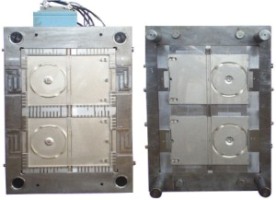If molded plastic parts fall short of the predetermined quality standards (test standards), they are defective products, or quality problems. Generally, these problems should be blamed to one or multiple of the following factors: molds, raw materials, process parameters, equipment, environment and personnel.

1. Color Inconsistency.
Under the standard light source(D65), there’s color difference perceivable to naked eyes, between injection molded parts and the reference samples.
Causes: (1) Material. Change toners and plastic granule brands etc.
(2) Technical issues. A. Temperature; B. Pressure. C. Melt time, etc.
(3) Environmental causes. Unclean material, container stain , dirty hopper, mold with greasy dirt, etc.
(4) Toners. Some toners are apt to change color under high temperature.
2. Insufficient Filling (or lack of plastic).
Occur nonconforming plastic parts that have bubbles, voids and/or shrinkage, etc.
Causes: (1) Molds. A、Poor design of runner system,eg. Unparallel runners, or runners are not located at the thick area. As the passage for melt to flow into the mold cavity, the runner system have a big bearing on molding quality. B. Poor venting configuration of the mold.C. Cold plastic or foreign substance blocks the runner. D. Wrong mold temperature.
(2) Material. A excessively high moisture. B. Excessive volatiles. C. Too much impurities or recycled material.
(3) Injection machines. A. Use underrated machines, for example use machines with 150T of clamping force to produce what entails a 180T machine. B. Blocked or undersized nozzle. C. Underfeeding, eg. Material barrel blocking, degraded material, etc. D. Failing check valve. E. Too short injection stroke.
(4) Molding operation. A. too low mold temperature. B. Too low injection pressure. C. Too short dwell time. D. under-speed injection. E. Too low melt temperature.
3.Weld Marks (lines).
Weld mark is a linear trace on the surface of the plastic parts. It may compromise the mechanical property as well as cosmetics of the product. Weld mark occurs during molding when the melt flow together and fail to merge completely.
Causes: (1) Mold. A Too many runners, ie, too many inlets and hence too small cross area of the inlets. B. No cold cavity or in wrong location.C. Unreasonable cooling system, melt cools too fast and unevenly in the mold.
(2) Material. A. Too much or unsuitable releasing agent. B. Bad fluidity of the melt. C. High content of Water or volatiles.
(3) Operation. A. Melt temperature is too low, which results in poor confluence. B. Injection pressure is not large enough to maintain the required speed, and thus cause temperature difference in the melt.
(4) Design of Injection machine and products. (Not to be discussed here.)
4. Ripples. Injection molded parts have spiral or cloud-like, waveform uneven surfaces (or inside transparent products).
Causes: (1) Mold. Similar to above, but cold melt has a bigger impact on defect of ripples.
(2) Material. A. Poor fluidity is the major cause.eg. transparent products made of PMMA, PC, ABS, etc. B. When ABS used is modified copolymer, it gives out gas under high temperature.
(3) Molding Operation. A. Injection underspeed. B. Melt flows too fast. C. Mold temperature is to low. D. Dwell time too short. Nozzle temperature too low.
5. Blurry Edges. Thin plastic extrudes along the parting lines of the molded parts, or on the sealing face of mold.
Causes: (1) Mold is the major cause. A. Parting line of the mold is too rough. B. Overworn.
(2) Material. Plastic melt has good fluidity, eg. PP, PA(Polyamide), PS etc.
(3) Molding Operation.A. Injection pressure to high. B. Too high temperature of the melt. C. Uneven distribution of injection pressure leads to uneven filling speed. D.Oversupplied melt leads to overpressure inside the cavity. (To Be Continued…)
